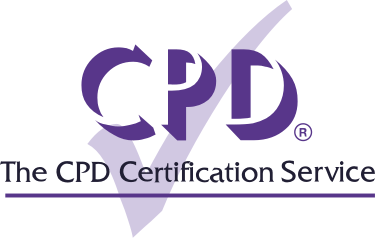We have reviewed and assessed tens of thousands of training courses over the past 27 years, across all industry sectors. The structure of a training course has a direct impact on how easy it is to navigate content and also on how people absorb new knowledge. Get the structure right, and the delivery starts to take care of itself. In this article we will provide a simple guide to training course structure, which we hope can help you to create a powerful CPD portfolio.
The basic structure of a CPD training course
Before we can get too advanced, we need to cover the basics of course structure. To manage time efficiently and cover all of the pertinent information, your course must follow a clear and logical approach.
You must first tell your audience what they are learning and why. Then cover your area of expertise, followed by a summary of the key factors that should emerge from the session. The final phase is to identify how successful the course has been and where it could be improved.
Now, let’s look at training course structure in more detail…
- Introduction
- Subject matter
- Summary
- Feedback
1. Introduction
A good introduction should set the tone for the entire course and anticipate any questions your audience may have.
- Introduce yourself and any colleagues helping you to run the course.
- Discuss the title of the course, explain the aims and key learning objectives.
- Explain the rationale of the course, its purpose and motivations; and why the course has been developed.
- Present the training schedule, a statement on course duration, and how the course will be delivered. Explain at which points questions may be invited.
- The Introduction of the attendees to one another, if required or suitable.
The purpose of the introduction is to create the optimum atmosphere for delivery of the subject matter. This should provide an authoritative platform to state guidelines, durations and expectations in a positive and engaging manner.
2. Subject Matter
The subject matter is your opportunity to showcase your organisation’s expertise, talents, knowledge and skills. Recommendations include:-
- Take your time, explain everything coherently using the appropriate diction for the subject matter and audience.
- Start with lighter information and delve deeper as the presentation evolves. Ensure there is logic to the learning journey if there are multiple segments for delivery and explanation.
- Identify the industry challenges which have led to the development of the training. Provide related examples and research to add context.
- Quality means everything, use up-to-date research data wherever possible to highlight topicality and relevance.
- Highlight the main issues and consequences associated with the subject matter, including alternative solutions and approaches.
- Provide interactive opportunities for delegates to discuss and reflect. This will encourage further thinking and embed fresh knowledge with associated reasoning.
- Make practical recommendations and solutions. Use success stories, case studies and appropriate examples.
3. Summary / Conclusion
The summary is essential and should not be omitted from a training course. You have probably covered a lot of information, and now it needs to be prioritised for your audience. Do not rush the summary, it is often the most remembered part of the training course. Stress the key points of the course including the main purpose. Reiterate key findings and make conclusions. Summarise the original learning objectives, and engage with the audience to ensure all of their questions have been answered satisfactorily.
Provide optional further learning with hand-outs, links to additional reading or research data as appropriate. Help your audience to reflect on what aspects of the course can be applied to practical work life challenges.
4. Any Feedback?
Feedback provides an opportunity to see how effective the course has been and what improvements can be made for the future. Make your feedback loop specific so it is usable data. Good or bad feedback, it’s valuable and identifies areas for improvement.
Lastly, your attendees may need to record and log their personal training for any ongoing Continuing Professional Development requirements. The myCPD Portal is a free CPD record tool where learners can set annual CPD targets, store CPD certificates of attendance, and track learning progress throughout the year in one simple place.
We hope this brief introduction on how to structure a CPD training course was helpful. Please visit our CPD Course Catalogue, Provider Directory and Event Calendar to find industry experts and training from across the sectors.
Become a CPD accredited provider
Established in 1996, The CPD Certification Service has over 27 years’ experience providing CPD accreditation. With members in over 100 countries, our CPD providers benefit from the ability to promote themselves as part of an international community where quality is both recognised and assured.
If you are looking for more information about CPD accreditation and are interested in offering training courses, seminars, workshops, eLearning, or educational events suitable for Continuing Professional Development, please visit the Become a CPD Provider page or contact our team to discuss in more detail. Alternatively, if you are looking for a free online CPD record tool to help manage, track and log your ongoing learning, as well as store your professional training records and attendance certificates in one simple place, go to the myCPD Portal page.













